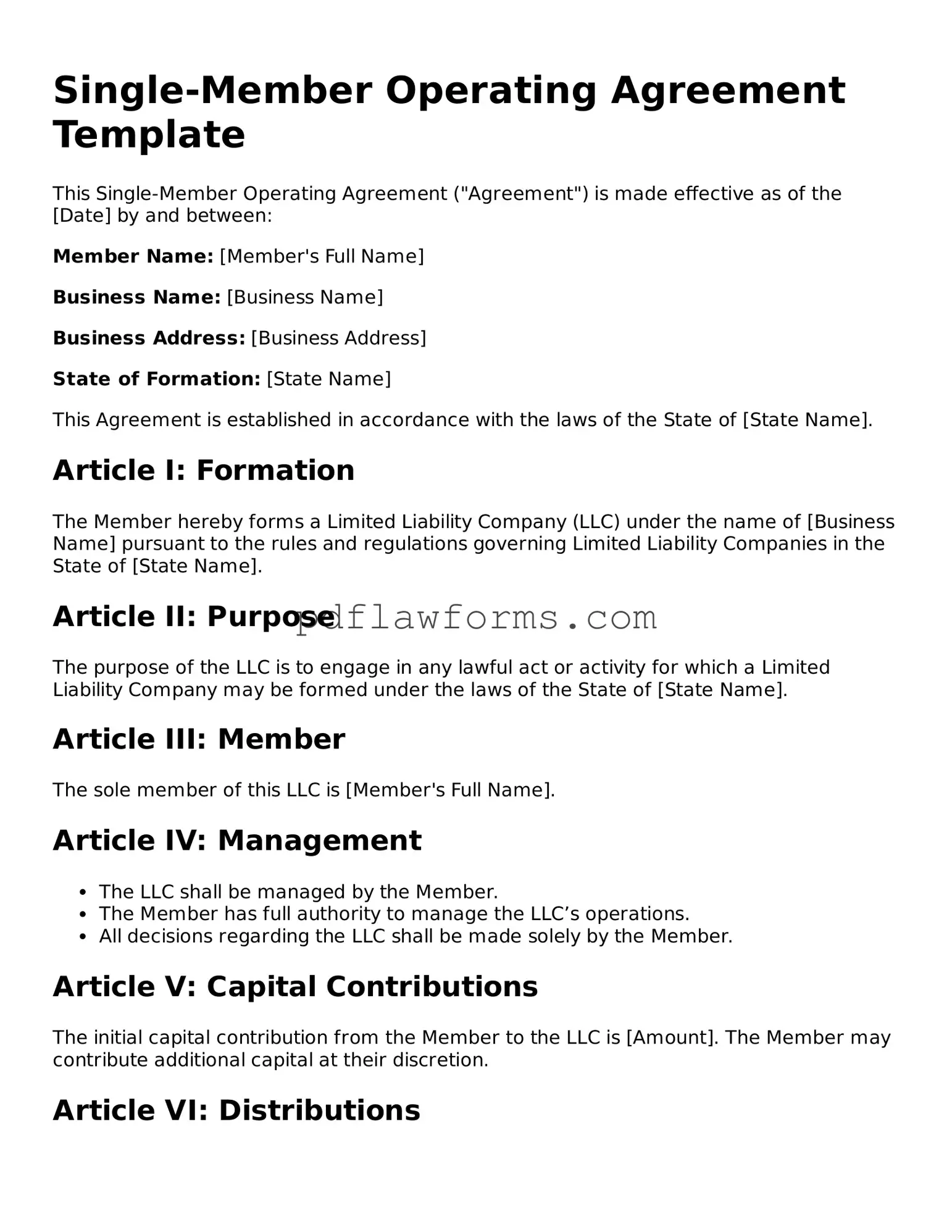Filling out the Single-Member Operating Agreement form can be straightforward, but many people make common mistakes that can lead to complications down the road. One frequent error is not providing complete information. Each section of the form must be filled out thoroughly. Omitting details can create confusion and may lead to issues with legal recognition.
Another mistake is using vague language. When describing the purpose of the business or the member’s rights and responsibilities, clarity is essential. Ambiguity can result in misunderstandings later, so it’s crucial to be specific about what is intended.
People often forget to date and sign the agreement. While it may seem minor, a missing signature can render the document invalid. Always double-check that all required signatures are present, including the date, to ensure the agreement is enforceable.
Inadequate consideration of state-specific requirements is another pitfall. Each state may have different laws regarding operating agreements. It is vital to research and ensure that the form complies with local regulations. Ignoring these requirements can lead to legal challenges.
Some individuals neglect to update the agreement after changes in the business. If there are alterations in ownership, structure, or purpose, the operating agreement should reflect these changes. Failing to do so can create discrepancies that may complicate matters in the future.
Additionally, people may overlook the importance of including an indemnification clause. This clause protects the member from personal liability for business debts and obligations. Not including it could expose personal assets to risk.
Finally, many individuals do not seek legal advice before finalizing their agreement. While it may seem like an unnecessary expense, consulting with a legal professional can help avoid pitfalls and ensure that the document meets all necessary legal standards. Taking this step can save time and resources in the long run.
